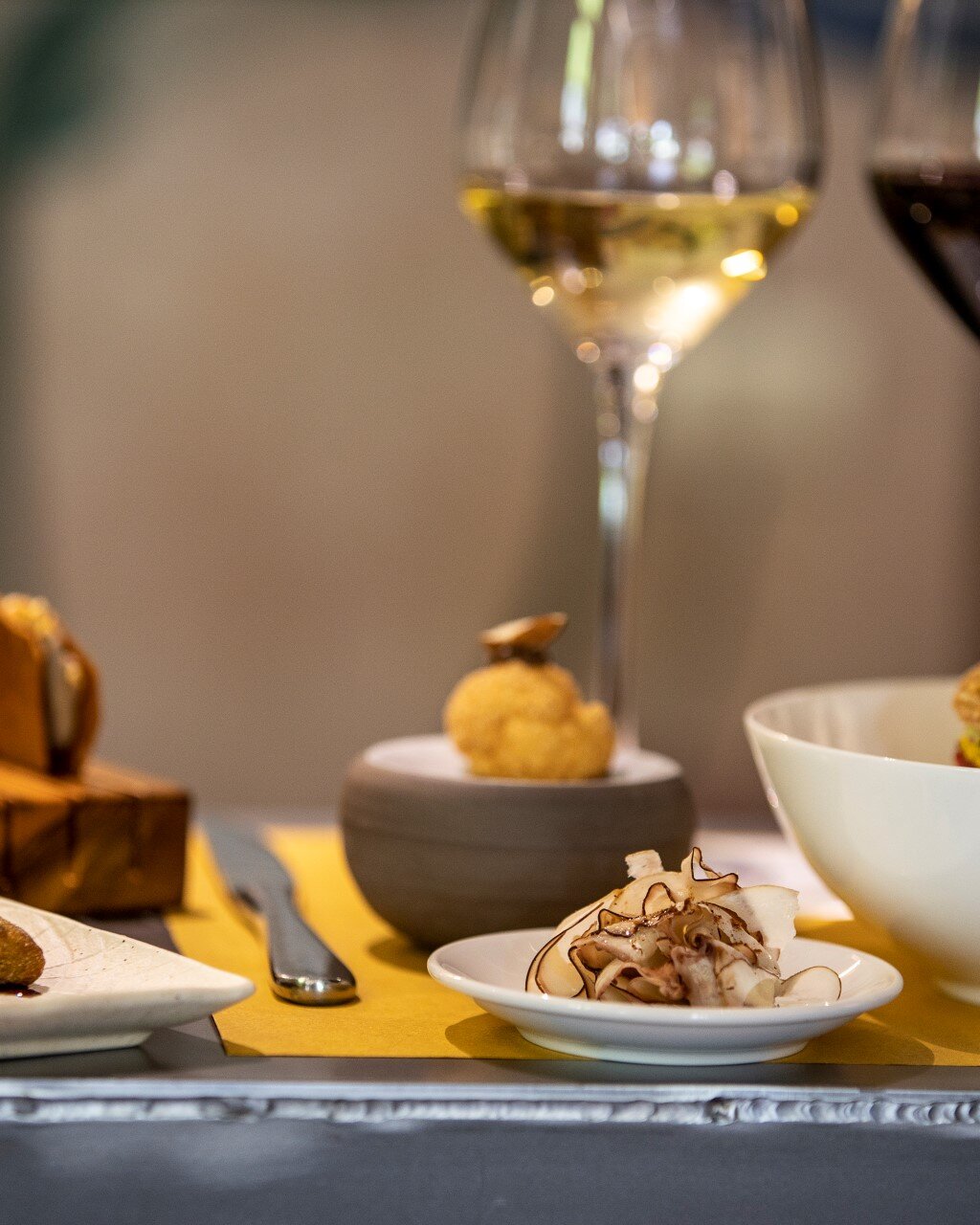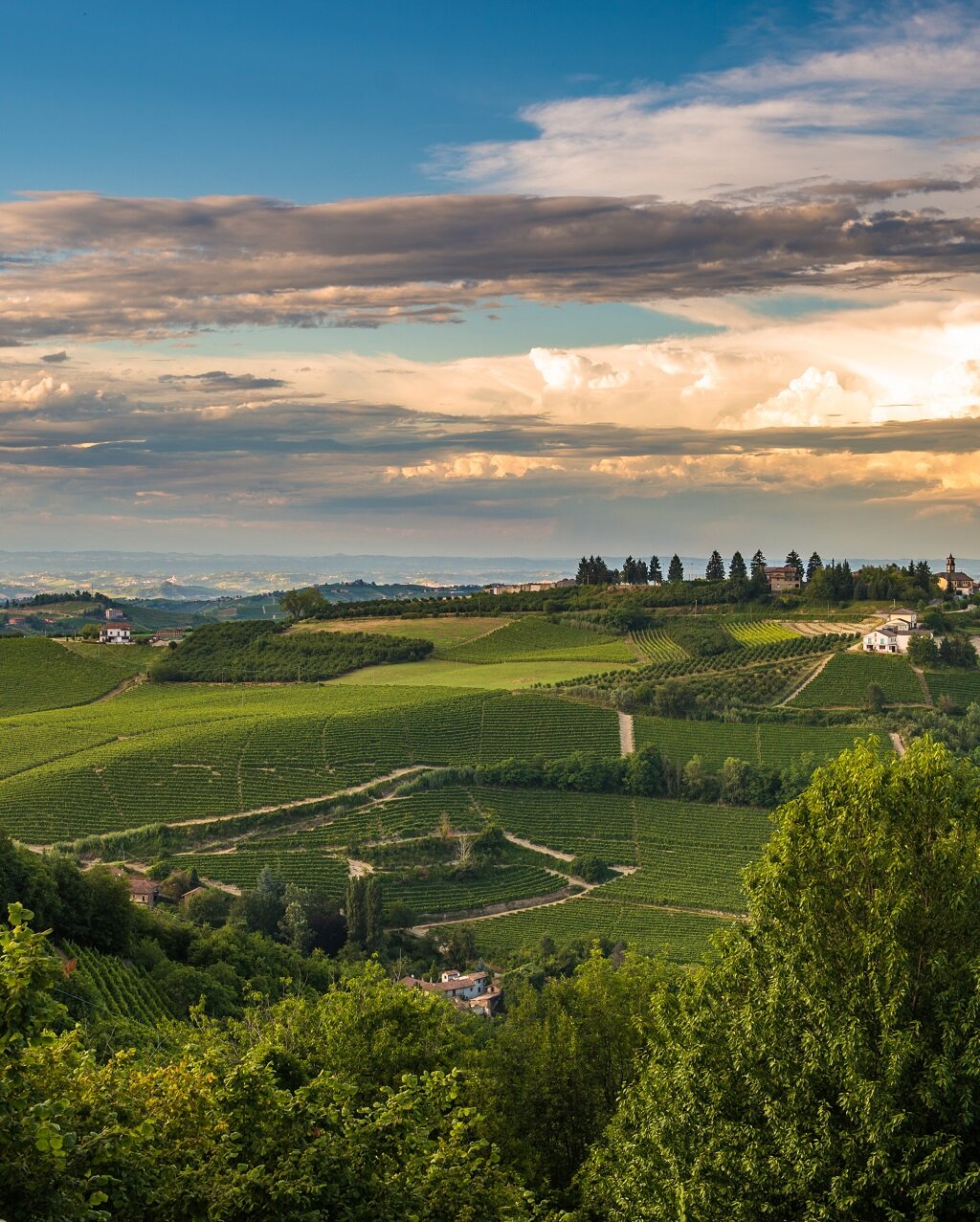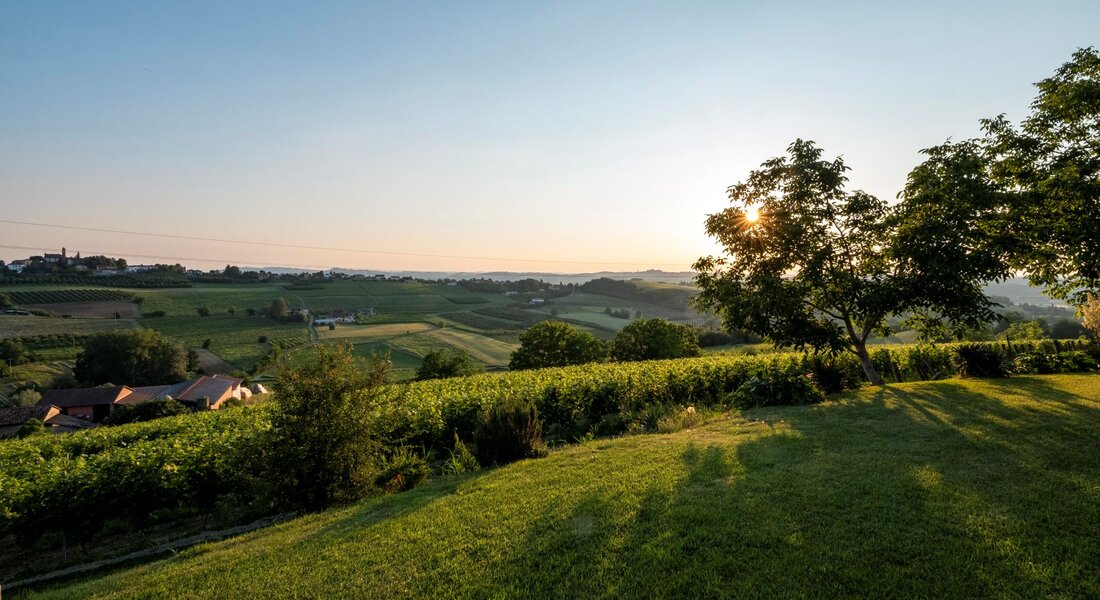The rocca of Costigliole d'Asti, perched on the massive Asinari Castle, is one of the most beautiful and important old towns in the province. After all, the name of the village has an ancient, almost mythical gastronomic reputation; a page in the history of Italian cuisine was written here.
The geography of Costigliole d’Asti is quite complex, with about a dozen hamlets forming a crown shape all around the old town, which is located slightly lower and more hidden. A stroll in the centre, through the steep alleyways and stairways of the Rocca, is an absolute must: here, you will find plenty of art treasures, including the Confraternita di San Gerolamo, with its fine Museo di Arte Sacra (Museum of Sacred Art), and, of course, the Castle, a well-renovated 19th-century building that retains its fine Juvarra-style staircase and houses the ICIF (the Italian culinary institute for foreigners) as well as the Consorzio Barbera d'Asti e Vini del Monferrato (Barbera d'Asti and Monferrato Wines Consortium).
In the many "satellite hamlets", it is worth mentioning the nearby Castle of Burio, a grim fortress that has remained faithful to its original architecture, the beautiful parish Church of Nostra Donna di Loreto (with an altar by Juvarra) and the stunning panoramic viewpoint of Bricco Lù.
The route to Isola d'Asti leads through a sea of vineyards. It is worth climbing up to the small village of Villa with its bell Tower (the only vestige of the castle) and beautiful palace. Whereas, in Mongardino, it is interesting to follow the path of the 13 chapels leading to the small Sanctuary of the Beata Vergine. The surrounding countryside is fertile and peaceful, as is the nearby village of Vigliano d'Asti, located right at the entrance of Val Tiglione. The Monte Castle is more of a late-medieval house-fortress with a 19th-century façade superimposed; however it is underground that the village has found fame thanks to the discovery in 1959 of the extraordinary minke whale today displayed at Museo dei Fossili – Parco Paleontologico Astigiano (Fossils Museum – Astigiano Palaeontological Park (it. Asti, a true medieval town), an almost intact 8-metre fossil dating back to the Pliocene.
Find out more
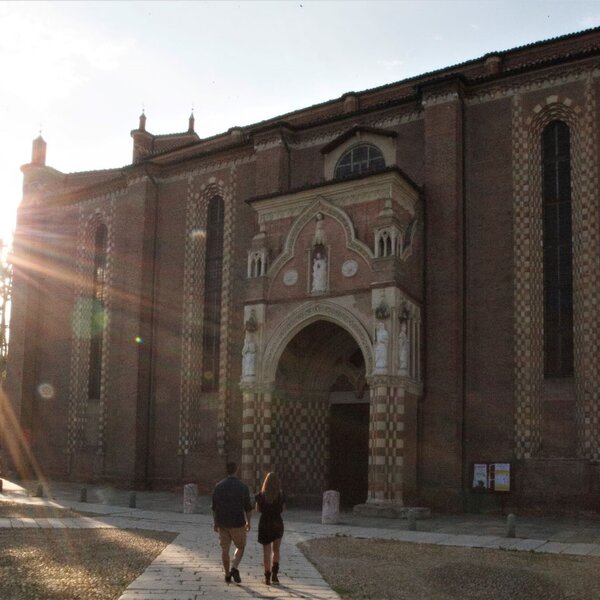
Asti, the Duomo District
Find out moreMontegrosso awaits us a few kilometres away: a pyramid of houses overlooked by the castle. The large village dominates the vast valley. Next we find the tiny village of Montaldo Scarampi, with one slope dotted with fine historical vineyards and the other one overlooking the truffle rocks.
Mombercelli is the first of many long-lost Castles in the Asti area. The MUSarMO modern art collection is worth a visit. Also worth mentioning is the Museo Storico della Vite e del Vino (Historic Museum of vine and wine), a collection of rural ethnography (there is a similar one in Montaldo Scarampi). The 17th-century three-nave parish Church also houses an altarpiece by Moncalvo. Finally, in the old town centre, there is the Evangelical Christina Church dei Fratelli, which was built by a Protestant community founded towards the end of the 19th century.
Within a short distance we find the village of Belveglio. The Castle is hardly reminiscent of the old Ghibelline fortress. Worthy of mention here is the figure of Umberto Calosso, the Italian speaker of Radio Londra during World War II who later became an intellectual, journalist, politician and writer of national importance.
Next, we pass through the beautiful little valley of Fontanabuona (with its homonymous Sanctuary dating back to the 16th century) to go up to Castenuovo Calcea. The ruins of the Castle provide a scenic backdrop to the village. The seventeenth-century parish Church of Santo Stefano in exposed brickwork is quite charming, as is the staircase on the bridge that recalls the old medieval entrance. The most beautiful surprise in the village, however, is the Art-Park La Court, a project conceived by the genius of the great stage designer Lele Luzzati and developed by Giancarlo Ferraris.
The landscape is a constant elegy to vineyards and the rural architecture which is particularly well represented here: the hamlets between San Marzano Oliveto and Moasca (two neighbouring villages) are an expression of the best Monferrato wine. In San Marzano Oliveto, the Asinari Castle (which, together with the parish Church, forms a harmonious square overlooking the hills) is privately owned, while the Moasca Castle, which almost fell into oblivion after the war, has been given a new lease of life thanks to a public project that has restored its interiors and now houses the Museum of the collections of Davide Lajolo.
In Moasca, both the parish Church and the Confraternity of San Rocco are quite interesting; the same is true in San Marzano Oliveto, where there is also a curious little Waldensian Temple. In Moasca, there is also a wetland area protected by the LIPU, i Rivi, located near the Nizza stream (it. Monferrato of Nizza), similar to the Paludo area in Agliano Terme.
Find out more
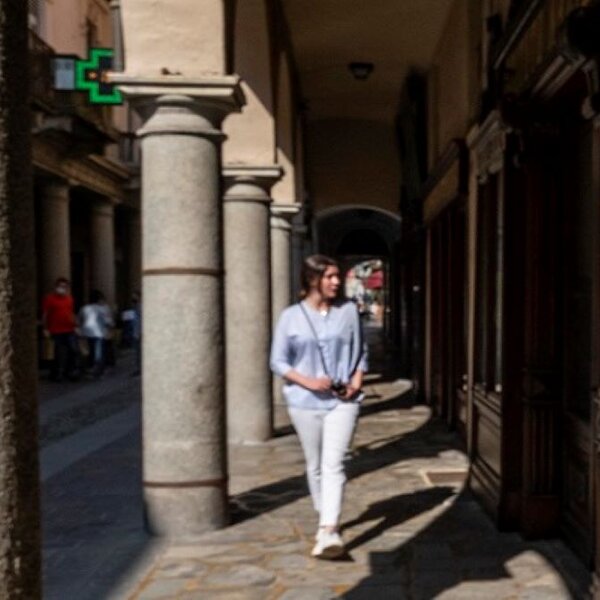
Monferrato of Nizza
Find out moreOur next stop is in fact Agliano Terme, another village that lost its Castle in the 17th century. The beautiful Sanctuary of the Annunciazione al Molizzo is another panoramic viewpoint worth seeing, while the Fons Salutis spa (the only one in the Asti area) still preserves the echoes of the glories of the Belle Époque…The town's vocation for tourism is also reinforced by the presence of the prestigious Scuola Alberghiera Astigiana. Finally, the parish Church of San Giacomo Maggiore has a beautiful 15th-century wooden Christ which should be seen.
To get to Calosso, you can go past Salere or preferably along the ridge which runs from Moasca in a flood of vineyards to the fertile Rodotiglia; in both ways, you reach Piana del Salto, just below the village's medieval old, with its Castle and heritage of crotin, ancient wine cellars carved into the tuff rock and celebrated during the beautiful Rapulé Fair in October. The parish Church of San Martino has a beautiful 18th century wooden choir and the village is very pretty with its Cantina Comunale (Municipal Wine Cellar) and a local glory such as the rare Gambarossa (Gamba di Pernice) vine which produces Calosso DOC wine, the latest Controlled designation of origin obtained by Piedmont. As you leave, it is also worth stopping at the Crevacuore panoramic viewpoint, just opposite the nearby village of Santo Stefano Belbo (it. Langa of Moscato).
Find out more
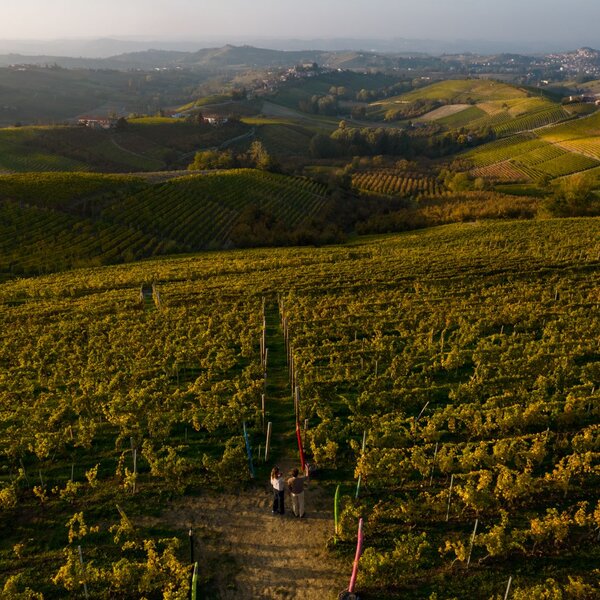
The Langa of Moscato
Find out moreFrom Calosso you can reach Castagnole delle Lanze by going down to Boglietto and then following the busy provincial road, or more gently you can go through the neighbouring village of Castiglione Tinella, and then descend to Coazzolo, a pretty village halfway up the hillside with its beautiful Castle, the panoramic Carmine Church painted by the English artist David Tremlett, the colourful pastels vineyard and the amphitheatre with piped music (it. The Langa of Barbaresco), and then on to Castagnole delle Lanze, the capital of Barbera.
Find out more
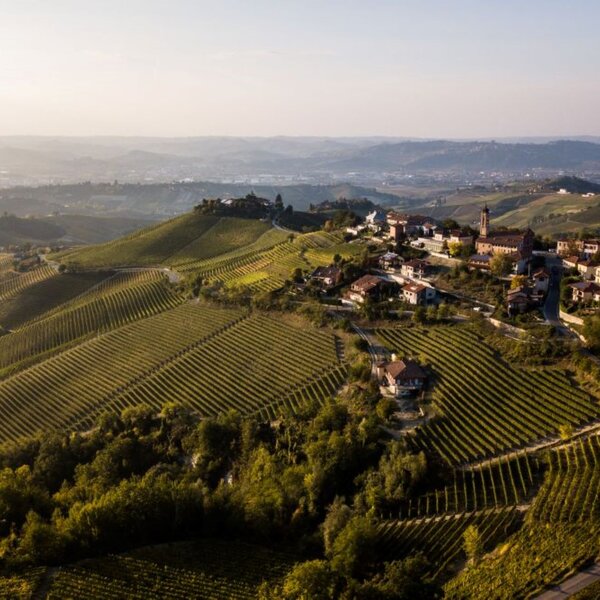
The Langa of Barbaresco
Find out moreThe upper village also boasts a highly impressive old town, which culminates in the Belvedere Tower, built in the 19th century by Count Paolo Ballada of Saint Robert. Here you can discover the count's unique biography while enjoying another, totally unexpected and dreamlike landscape. It is best to continue on foot and walk around the large 17th-century parish Church of San Pietro, with a façade rebuilt in the 20th century: its remarkable 18th-century altar and balustrade are also a must-see. The Confraternity of the Battuti Bianchi is also beautiful, as are the stately buildings, all restored and comfortably inhabited.
Along the panoramic route of the Annunziata, which once again glides through a sea of rows of vines, you go back to Costigliole d'Asti, only a handful of hills further on, yet you wish they would never end.
